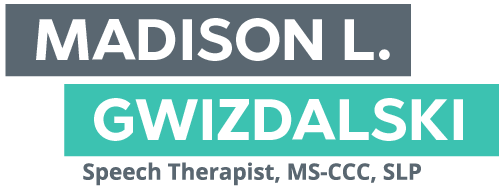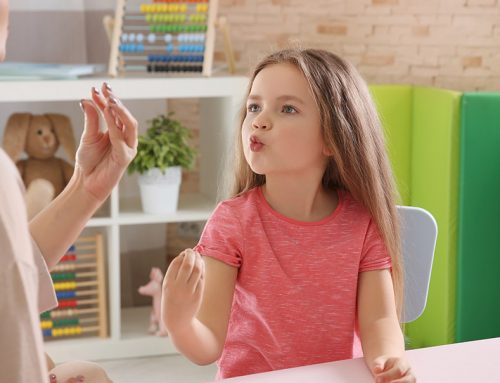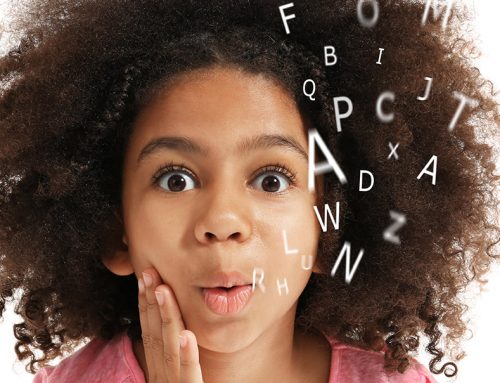
Typical Language Development
Preschool Language Scale – Fourth Edition from The Psychological Corporation (2002).
What should my child be be able to understand?
1.5 Years
- Identifies pictures of familiar objects
- Understands inhibitory words (e.g., “no”, “don’t”)
- Indicates body parts on self, caregiver, or doll
- Understands verbs in context
2 Years
- Identifies clothing items on self, caregiver, or doll
- Understands spatial concepts (e.g., “in”, “off”, “out”)
- Recognizes actions in pictures
- Understands several pronouns (e.g., “me”, “my”, “your”)
2.5 Years
- Understands use of objects
- Understands part/whole relationships
- Understands simple descriptive concepts (e.g., “big”, “little”, “wet”)
- Follows 2-step, related directions without cues
3 Years
- Understands quantity concepts (e.g., “one”, “some”, “rest”, “all”)
- Understands pronouns “his” and “her”
- Understands negatives in sentences
- Understands negatives in sentences
3.5 Years
- Identifies colors
- Makes inferences
- Identifies categories of objects in pictures
- Understands picture analogies
- Understands “more” and “most”
4 Years
- Understands expanded sentences
- Understands qualitative concepts (e.g., “tall”, “long”, “short”)
- Understands shapes
4.5 Years
- Understands “-er” as “one who”…
- Understands time concepts (e.g., “night”, “day”)
- Understands noun + 2 modifying adjectives
5 Years
- Identifies an object that doesn’t belong
- Understands quantity concepts 3 and 5
- Indicates body parts on self
- Understands passive voice sentences
5.5 Years
- Orders pictures from largest to smallest
- Understands quantity concepts (e.g., “half”, “full”)
- Understands time/sequence concepts (e.g., “first”, “last”)
6 Years
- Identifies initial sounds
- Understands quantitative concepts (e.g., “each”)
- Understands rhyming sounds
6.5 Years
- Adds and subtracts numbers to five
- Understands time concepts (e.g., seasons)
What should my child be be able to express?
1.5 Years
- Imitates words
- Uses 5-10 words
- Vocalizes and uses gestures to make requests
- Produces different types of consonant-vowel combinations
- Babbles short syllable strings with inflection similar to adult speech
2 Years
- Names objects in pictures
- Uses words more often than gestures to communicate
- Asks questions
- Uses words for a variety of pragmatic functions
- Uses different word combinations
2.5 Years
- Uses plurals
- Combines 3 or 4 words in spontaneous speech
- Answers “what” and “where” questions
- Uses verb + ing
- Uses a variety of nouns, verbs, modifiers, and pronouns in spontaneous utterances
3 Years
- Produces basic 4-5 word sentences
- Names a variety of pictured objects
- Tells how an object is used
- Uses possessives
3.5 Years
- Answers questions logically
- Uses words that describe physical state
- Completes analogies
- Answers questions about hypothetical events
4 Years
- Responds to “where” questions
- Complete analogies
- Names objects when the object is described
4.5 Years
- Responds to “why” questions by giving a reason
- Names categories
- Repeats sentences
- Uses qualitative concepts “short” and “long”
- Uses “-er” to indicate “one who”
- Uses past tense forms
5 Years
- Formulates meaningful, grammatically correct questions in response to picture stimuli
- Describes similarities
- Names the items that fit into categories
5.5 Years
- Completes similes
- Counts items and gives correct number
- Repairs semantic absurdities
6 Years
- Defines words
- Repairs grammatical errors
- Rhymes words
- Segments words
6.5 Years
- Tells a story in sequence, using grammatically correct sentences
- Tells a story with introduction, sequence, and conclusion
- Uses irregular plurals
- Expresses quantity (e.g., “empty”, “more”)
Typical Speech Development
What is normal?
By 24 Months
- By 24 months, your child should be understood by others 50-75% of the time.
By 36 Months
- By 36 months, your child should be understood by others 75-100% of the time.


